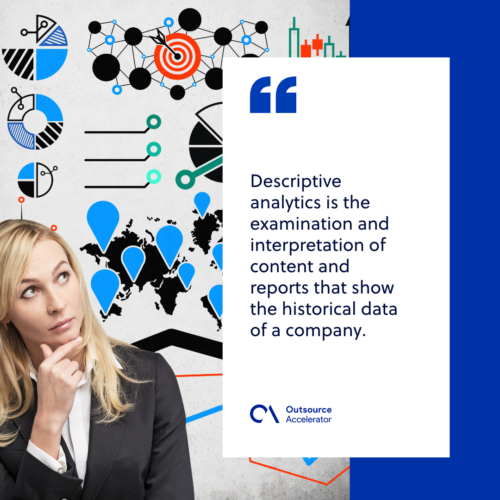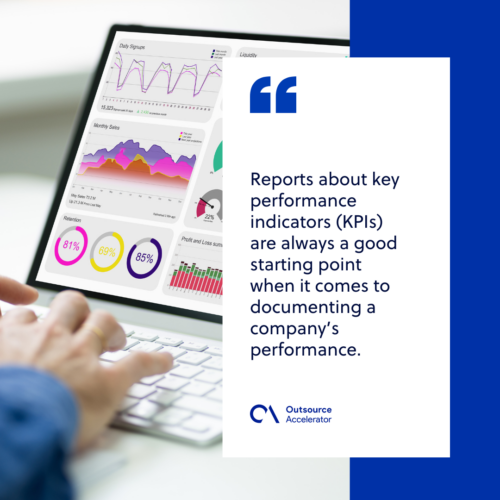Descriptive analytics
Definition
What is descriptive analytics?
Descriptive analytics is the examination and interpretation of content and reports that show the historical data of a company. By using past figures, businesses can make forecasts and make comparisons to the present data.
Business intelligence (BI) specialists utilize the content made available by descriptive analytics to develop stronger business strategies. They can also point out areas of improvement to work on.

Top 4 examples of descriptive analytics
Descriptive analysis cannot be completed without data. As such, they are based on factual information pulled from past documents and company files.
Here are examples of how descriptive analytics is applied in various sectors of the business.
Financial reports
One of the most trustworthy and transparent data that one can use is a company’s financial reports. Every financial transaction can be found in these documents, from the company’s assets to its liabilities, everything is laid out error-free.
These are often made by accountants with the help of bookkeepers and accounting software.
Market and trends
Research about the market and trends can be beneficial and a great add-on for descriptive analysis. These often show historical data about how the company coped with past trends and how they came to be.
While these documents can vary, they could be helpful in forecasting incoming trends and how the market will approach them.
Customer engagement
Another data set that one can consider is customer engagement reports from the past. As seasons and trends change, customer engagement reflects how the company went with the flow.
This will show how the business can improve or strengthen its public-facing campaigns, making it more customer-centric for future runs.
Project progression
Reports about key performance indicators (KPIs) are always a good starting point when it comes to documenting a company’s performance. Active departments almost always have their own documentation process that can be backed up by figures.

2 ways to present descriptive analytics
BI specialists and business analysts must always use proper presentation formats in order to convey the figures and the message in a coherent manner. A descriptive analysis report is an important part when presenting findings to executives and stakeholders.
Presentations and graphs
Slides and PowerPoint presentations with graphs are one of the most popular ways to present any findings, figures, and documents. With how slides are presented, the creator must only put in the necessary information along with some helpful visuals.
Bar graph
This is used to represent numerical figures, mainly to compare and contrast numbers within a specific range or category.
Pie charts
Used to present statistics and how the variables are divided, pie charts are a good tool to reflect percentages as a whole.
Tables
Some people opt to use a table chart to represent data and figures in neat rows and columns. Tables are used to present information in an organized manner that can easily be digestible for the readers and the presenters themselves.
Written reports
In most cases, slide presentations are made with written reports or handouts as part of the documentation process. Within these written reports, there are additional information and figures that can back up what the presenter reports.
Overall, all documents must have factual information and historical data to back them up. Reputable sources also lend credibility to the research itself.







 Independent
Independent




